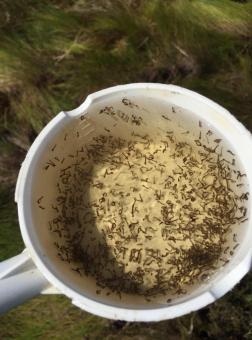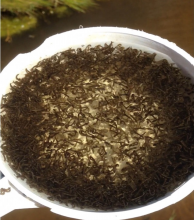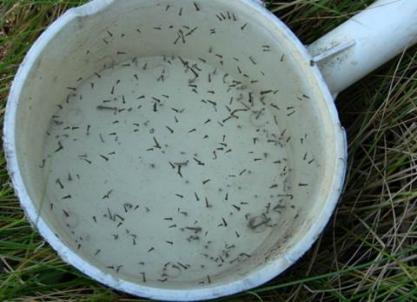Pre- and Post- Aerial Larvicing Treatment
Salt marsh aerial larvicide application
Prior to an aerial larvicide, field technicians inspect various “Dip Stations” on that town’s salt marsh. Ipswich has 13 Dip Stations. Dip Stations are an indicator pool to get an idea of what is breeding among the entire salt marsh; if all indicator pools are breeding mosquitos heavily, all upland wet areas will be too. Small white cups are used to collect a density reading of mosquito larvae. Figure 1 was taken on day 1 of surveillance, a particularly hot and sunny day, at Greenwood Farm in Ipswich. Figure 2 was taken the very next day in the same spot on the salt marsh. These figures represent how quickly mosquito larvae can grow before emerging as adult, flying mosquitos. By the third day, larvicide was applied to the Ipswich salt marsh by helicopter, killing almost all mosquito larvae (99% efficacy rate). Figure 3 was taken a day following the larvicide application, all larvae in Figure 3 are either dead or dying, thus decreasing the flying mosquito population in Ipswich.
 (Figure 1 - Greenwood Farm, Ipswich. Pre-Treatment)
(Figure 1 - Greenwood Farm, Ipswich. Pre-Treatment)
 (Figure 2 - Greenwood Farm, Ipswich. Pre-Treatment)
(Figure 2 - Greenwood Farm, Ipswich. Pre-Treatment)
 (Figure 3 - Greenwood Farm, Ipswich. Post-Treatment)
(Figure 3 - Greenwood Farm, Ipswich. Post-Treatment)
